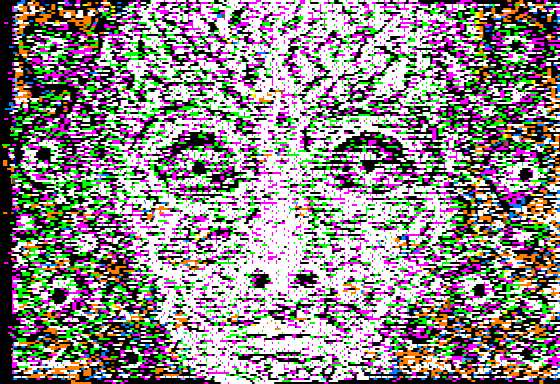EARLY APPLE II
The Apple screen is black; little lights are turned on by painting with a stylus on the graphics tablet. Switching to black, my movements along the graphics tablet turned off the little lights. These little lights, of course, were pixels, but in the early days, the pixels were so big they looked like dots. The images on the screen were crude, with stair steps from one line to another: they appeared like surreal needlepoints. The screen resolution of the Apple II computer was less than half of the standard television resolution, and there were only four colors: orange, blue, green, and purple. I could work with this low resolution because I was used to the stair-stepping of fabric art.
My first series was Improvisational paintings inspired by the movie The Mystery of Picasso. Using a camera below a glass, the film captures Picasso's process as he paints on the glass, takes a rag, wipes off some of the paint, and then paints again. I videotaped my process as I painted and erased using the Graphics tablet and stylus.
The Variations series was possible because I learned how to save mages on a disk. The initial image for this series was a face created with a few black marks on a white background. Once I saved this initial image, I started to alter it. Each image grew out of another image. When I created an image I liked, I saved it and continued working on it. If I got stuck and couldn't figure out what to do with the image on my screen, I loaded in one of the previous images I had saved on my disk and worked on it.
The goal of this series was never to come up with one image; instead, it was to explore variations. I was improvising on a theme of the possible configurations of a human face using the limited capacity of the Apple II. The images looked like needle points of alien beings.





